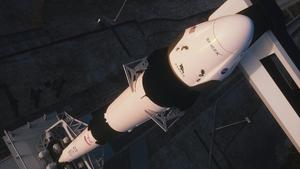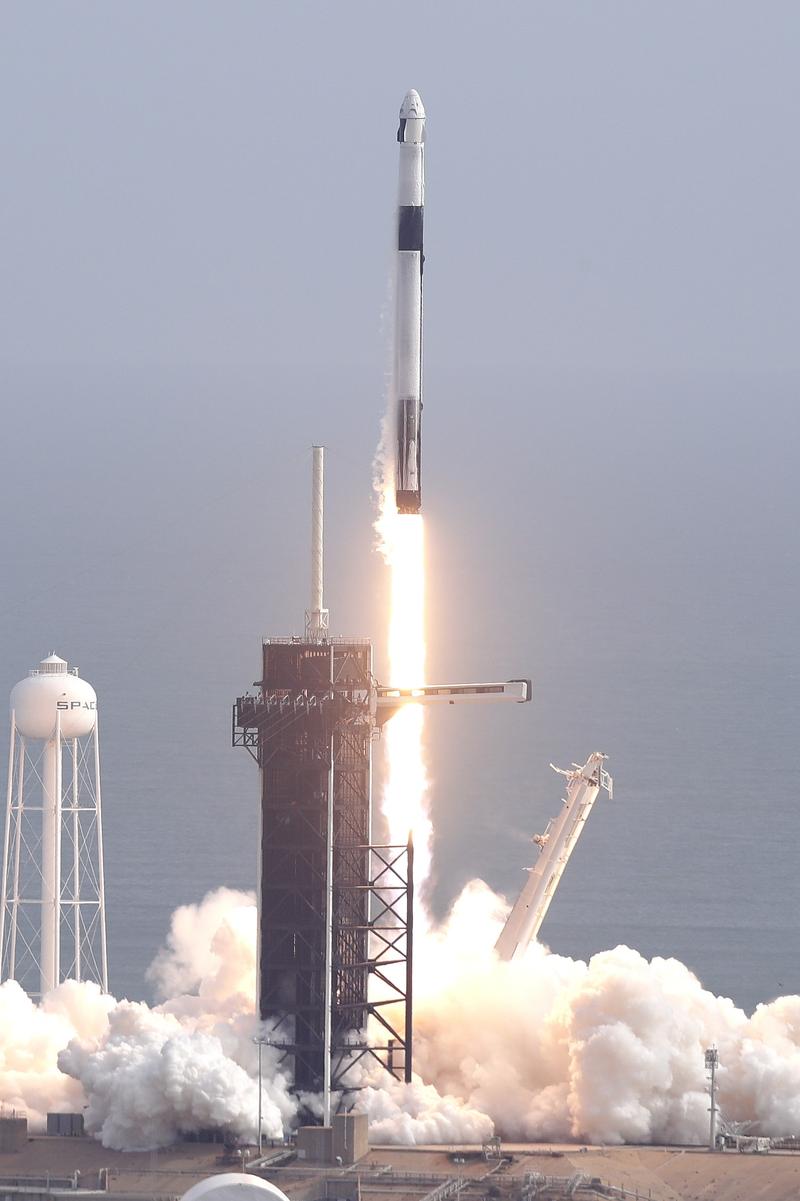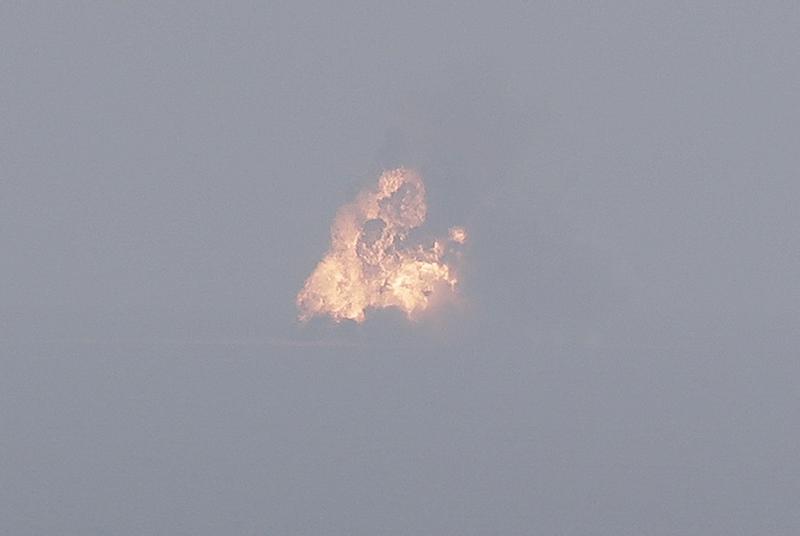 This photo provided by SpaceX shows a SpaceX rocket stands on the launch pad, Jan 18, 2020 at Cape Canaveral in Florida. (PHOTO / SPACEX VIA AP)
This photo provided by SpaceX shows a SpaceX rocket stands on the launch pad, Jan 18, 2020 at Cape Canaveral in Florida. (PHOTO / SPACEX VIA AP)
CAPE CANAVERAL, Fla — Elon Musk’s SpaceX simulated a successful emergency landing on Sunday in a dramatic test of a crucial abort system on an unmanned astronaut capsule, a big step its mission to fly NASA astronauts for the first time as soon as this spring.
Crew Dragon fired on-board thrusters to detach itself from the rocket less than two minutes after liftoff, simulating an emergency abort scenario to prove it can return astronauts to safety
A Crew Dragon astronaut capsule launched at 10:30 am and softly splashed down about 32 km off the coast of Cape Canaveral in Florida about eight minutes later, after ejecting itself from a rocket that cut off its engines 19 km above the ocean to mimic a launch failure.
Crew Dragon detached from the Falcon 9 rocket at “more than double the speed of sound,” Musk told reporters, at 40km above the Atlantic Ocean — roughly twice the altitude of a commercial jetliner.
“It is a picture perfect mission. It went as well as one can possibly expect,” Musk said at a press conference.
ALSO READ: Musk unveils SpaceX rocket designed to get to Mars and back
National Aeronautics and Space Administration administrator Jim Bridenstine also described the test as a success.
The first mission with humans aboard, which will be the final test mission before NASA’s commercial crew program becomes operational, is scheduled for the second quarter of this year, after the spacecraft is completed no later than March, Musk said.
 A Falcon 9 SpaceX rocket lifts off from pad 39A during a test flight to demonstrate the capsule's emergency escape system at the Kennedy Space Center in Cape Canaveral, Fla, Jan 19, 2020. (JOHN RAOUX / AP)
A Falcon 9 SpaceX rocket lifts off from pad 39A during a test flight to demonstrate the capsule's emergency escape system at the Kennedy Space Center in Cape Canaveral, Fla, Jan 19, 2020. (JOHN RAOUX / AP)
In what was a key trial ahead of carrying humans, SpaceX also tested its rescue teams’ response after splash down. They scrambled toward Crew Dragon with the US Air Force’s Detachment 3 emergency rescue teams in tow — a vital part of the test to practice a rescue mission to retrieve astronauts from the capsule.
Crew Dragon, an acorn-shaped pod that can seat seven astronauts, fired on-board thrusters to detach itself from the rocket less than two minutes after liftoff, simulating an emergency abort scenario to prove it can return astronauts to safety. Each stage of the test prompted loud cheers from SpaceX crew members watching the footage from back on land.
The test is crucial to qualify the capsule to fly humans to the International Space Station, something NASA expects to come as soon as mid-2020. It follows years of development and delays as the United States has sought to revive its human spaceflight program through private partnerships.
NASA awarded US$4.2 billion to Boeing and US$2.5 billion to SpaceX in 2014 to develop separate capsule systems capable of ferrying astronauts to the space station from US soil for the first time since NASA’s space shuttle program ended in 2011. The space agency has since relied on Russian spacecraft for rides to the space station.
 A Falcon 9 SpaceX rocket lifts off from pad 39A during a test flight to demonstrate the capsule's emergency escape system at the Kennedy Space Center in Cape Canaveral, Fla, Jan 19, 2020. (JOHN RAOUX / AP)
A Falcon 9 SpaceX rocket lifts off from pad 39A during a test flight to demonstrate the capsule's emergency escape system at the Kennedy Space Center in Cape Canaveral, Fla, Jan 19, 2020. (JOHN RAOUX / AP)
During the test Crew Dragon used its so-called SuperDraco thrusters to jet itself away from the rocket at supersonic speeds of up to 2,400 kph. The Falcon 9 booster free-fell back to the ocean, with its first stage crashing into the waves and creating a tall plume of smoke seen on the horizon.
The capsule deployed four parachutes to slow its descent, and carried two human-shaped test dummies on seats fitted with motion sensors to collect data on the immense g-force — the effect of acceleration on the body — astronauts would be subjected to during abort.
READ MORE: SpaceX rocket brings first batch of 60 internet satellites into space
The test was originally scheduled for mid-2019 but was delayed after a Crew Dragon capsule exploded in April on a test stand just before firing its launch abort thrusters, triggering a lengthy investigation.
SpaceX-led investigators in July zeroed in on a previously unknown explosive reaction between a titanium valve and a propellant used to ignite the thrusters. A SpaceX official said the company completed the investigation within the last week.


